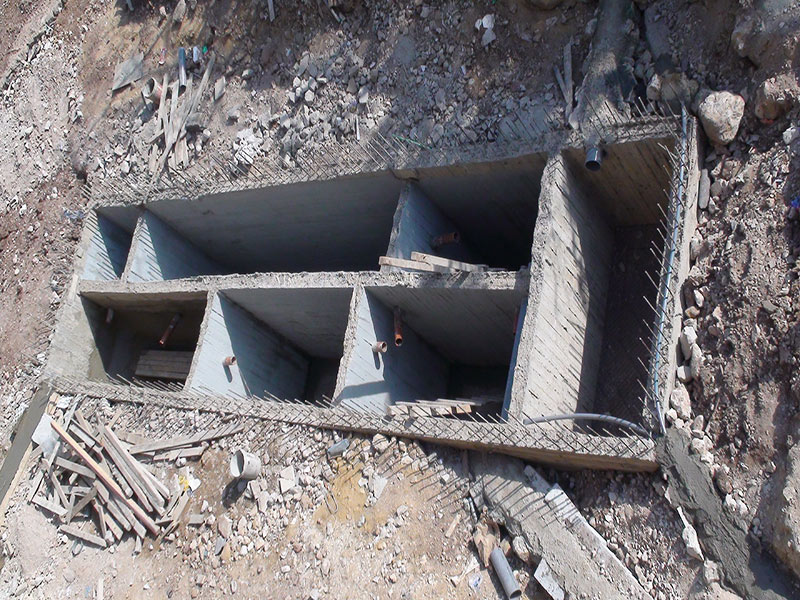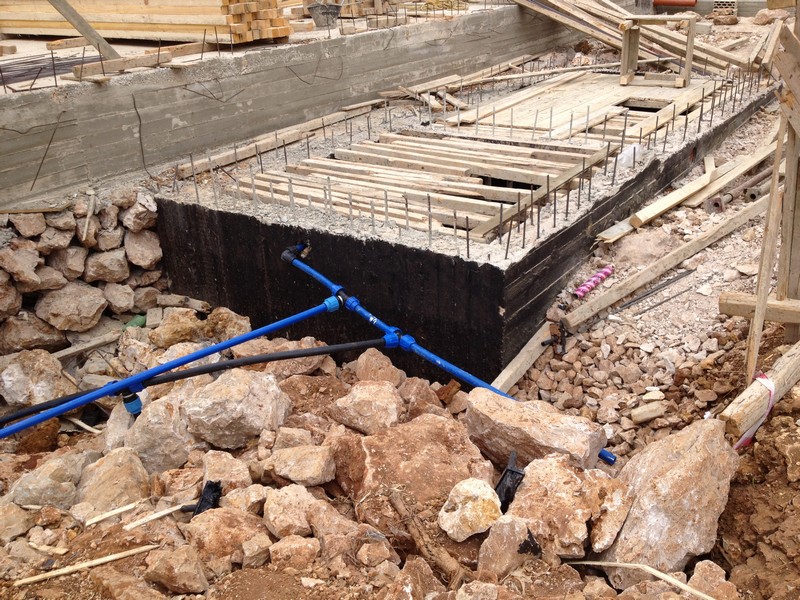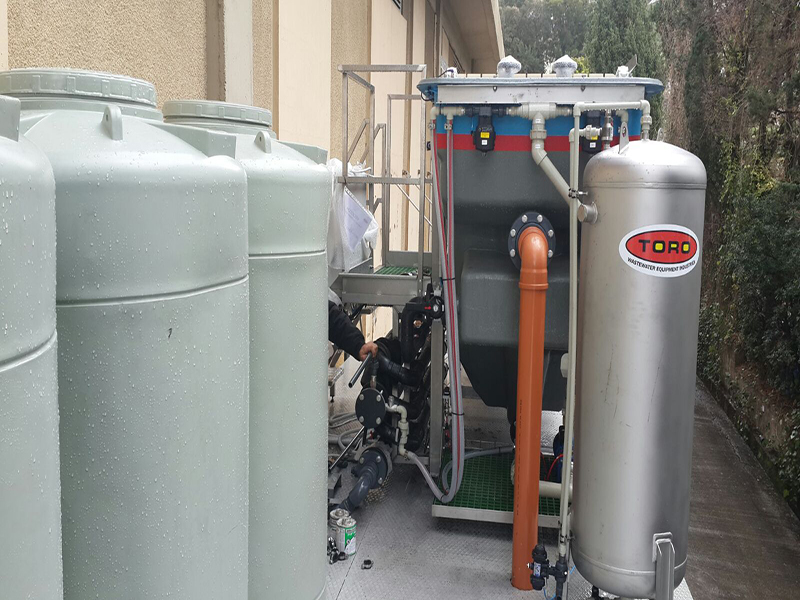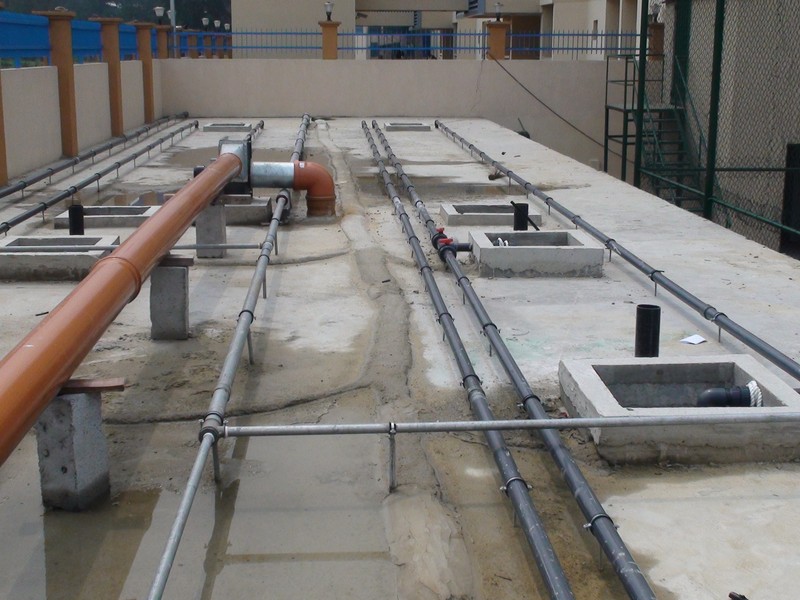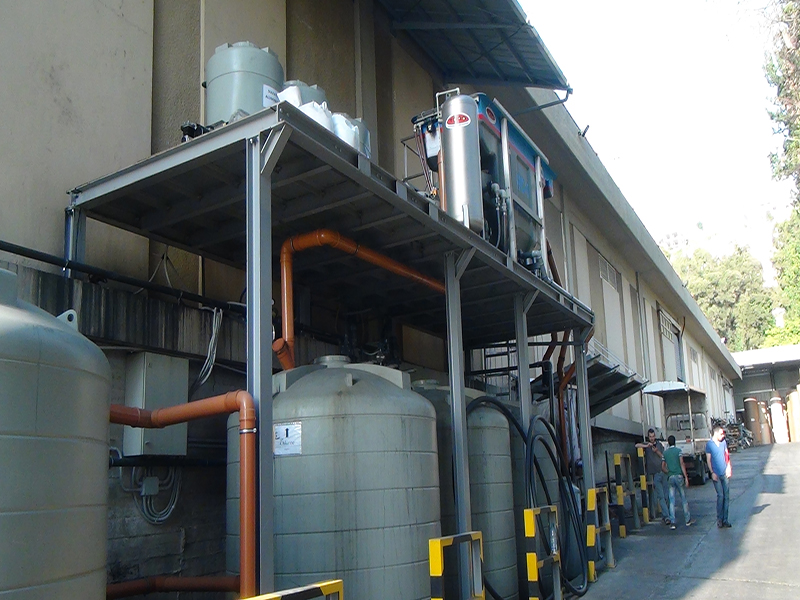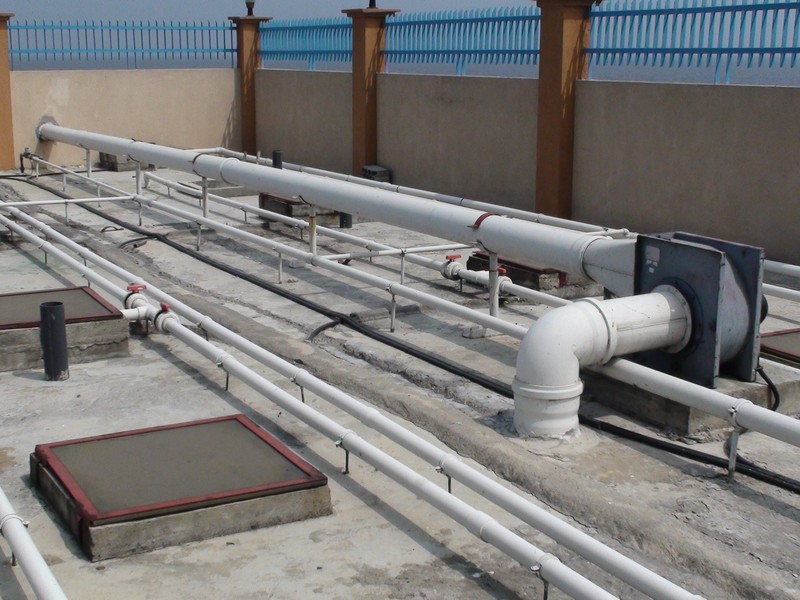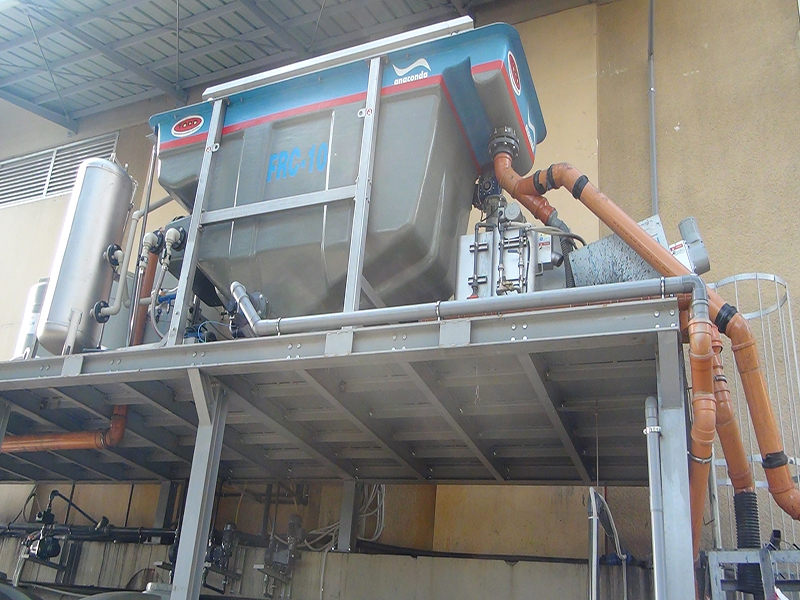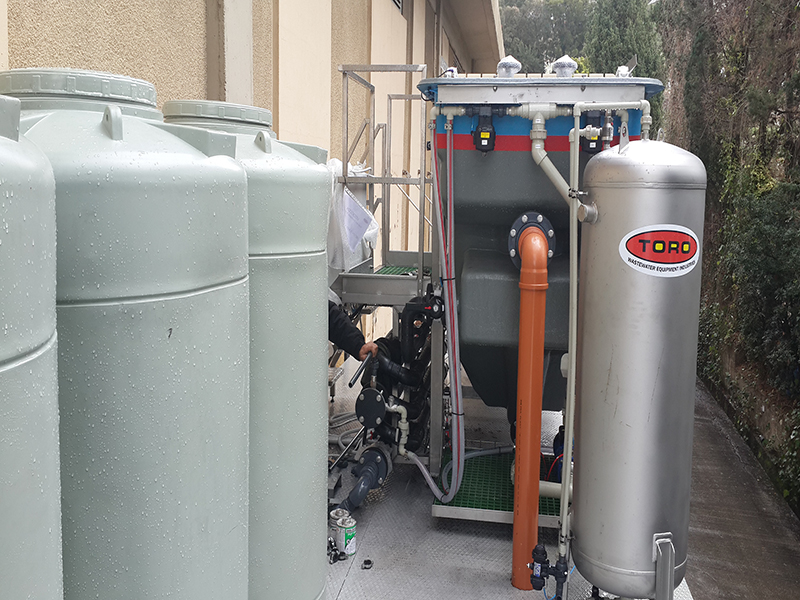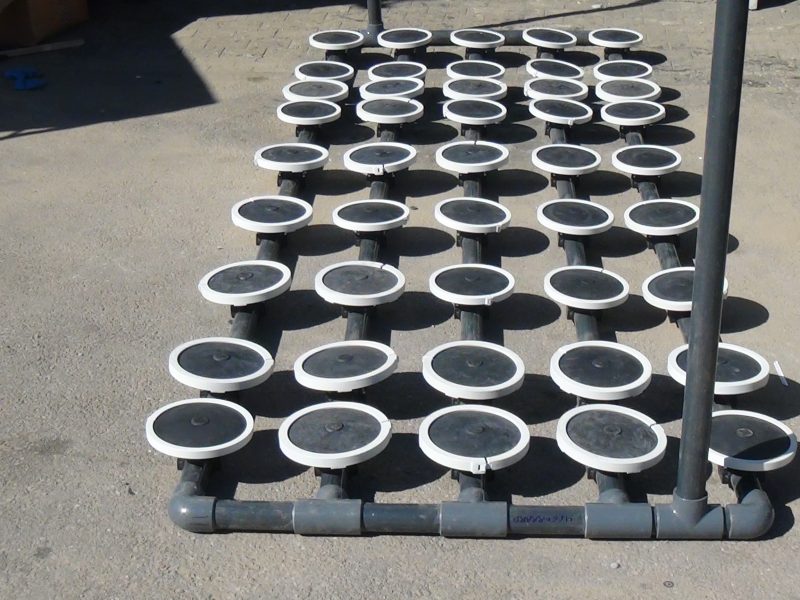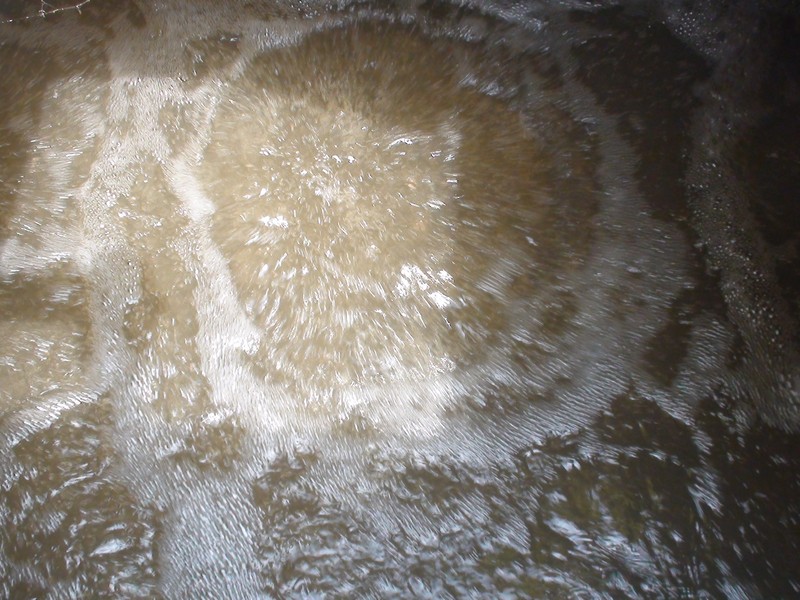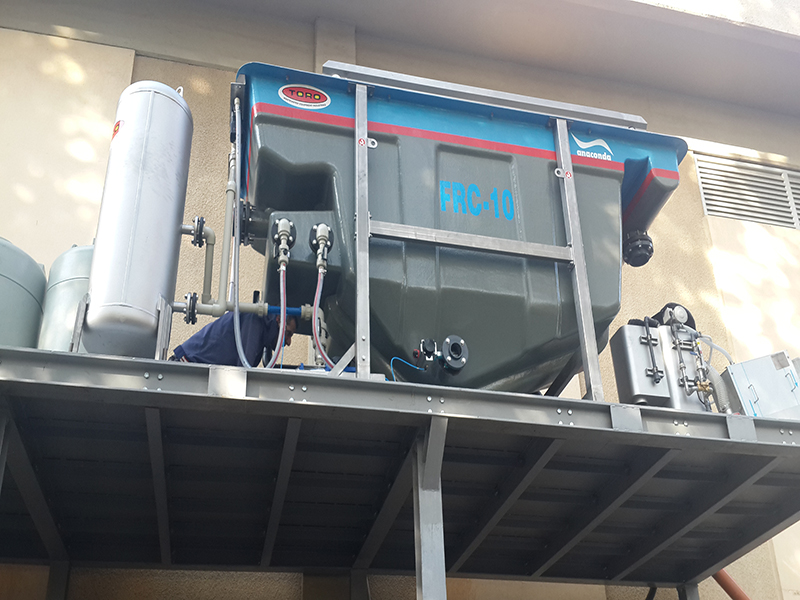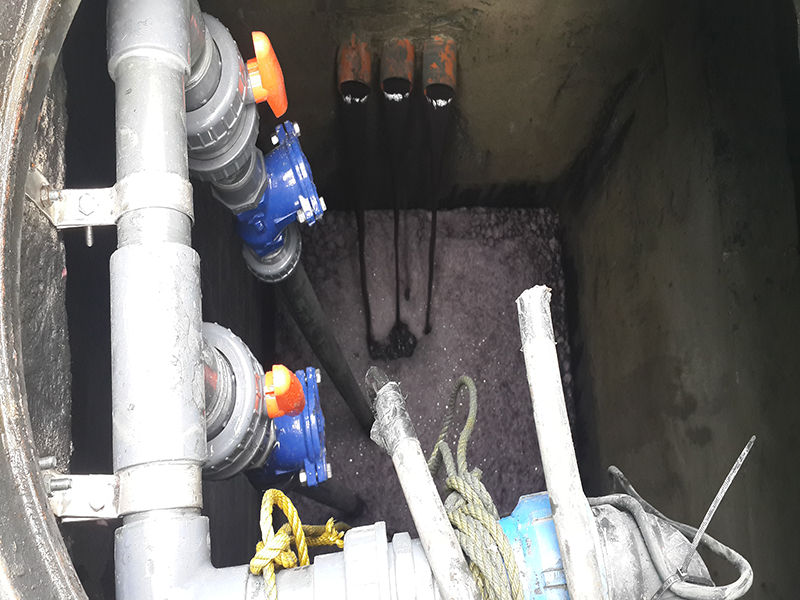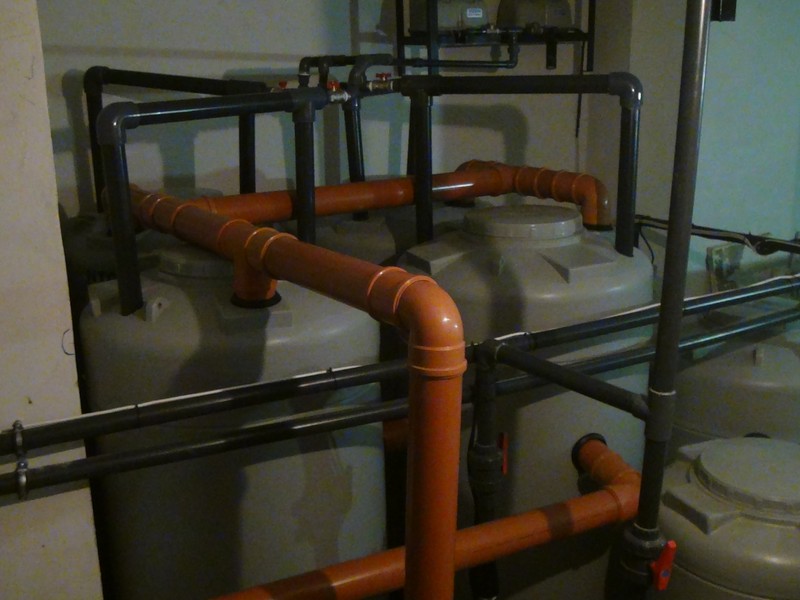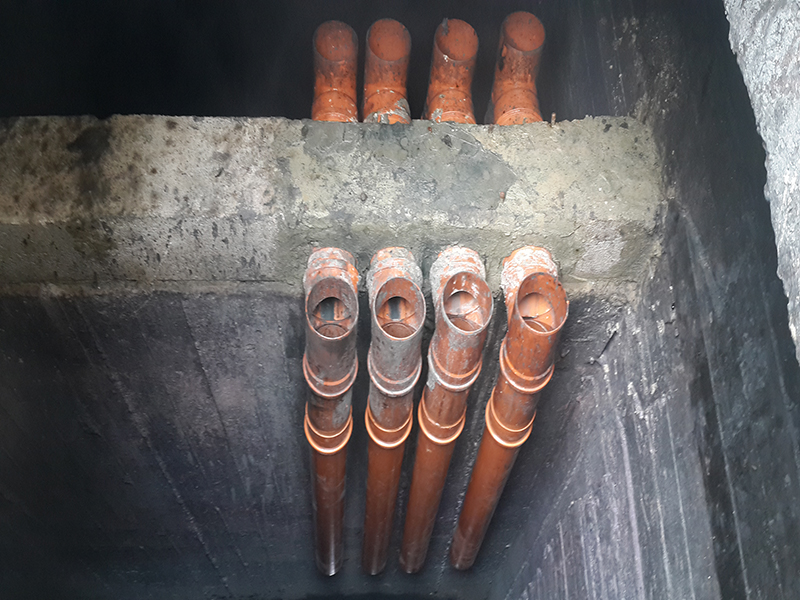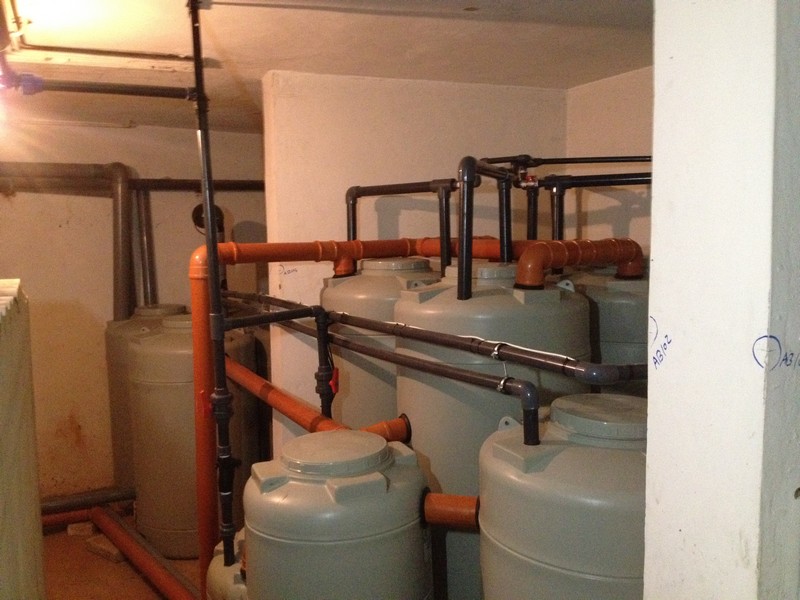Sewage Characteristics
The goal of sewage treatment is to process sewage to the point that it will meet the Effluent Discharge Standards of the local authority, or be suitable for re-use, such as use for irrigation.To begin the discussion of the Sewage Treatment Process, it is necessary to know the composition of the sewage. Typical characteristics for domestic sewage are:
Total Suspended Solids (TSS) 200 - 300 mg/l
Biological Oxygen Demand (BOD) 200 - 300 mg/l
Chemical Oxygen Demand (COD) 450 - 700 mg/l
Nitrogen (total as N) 30 - 50 mg/l
Phosphorus (total as P) 6 - 10 mg/l
Fats, Oil, Grease (FOG) 50 - 150 mg/l
Sewage from hotels and resorts is often significantly stronger than domestic sewage. Typical BOD values for hotels and resorts range from about 350 mg/l to 450 mg/l. Sewage from industrial and commercial establishments may also be much different in both composition and strength and should be evaluated on a case-by-case basis.
The Sewage Treatment Process
Sewage treatment processes include: Preliminary treatment, Primary treatment, Secondary treatment, Tertiary treatment.Preliminary Treatment:
Preliminary Treatment is achieved by eliminating from the wastewater any constituents which can clog or damage the pipes and pumps. It consists of a screening system to remove larger solids, grit chamber to remove sand or grit, grease traps at restaurants, oil separators at mechanical shops, lint traps for commercial laundries, and various other types of industrial pre-treatment depending on the type of industry.Primary Treatment:
After the sewage has been pre-treated, it flows into a large tank, called Primary Clarifier or settling tank. The process consists of providing a tank with quiet conditions so that any solids in the water are given a chance to settle, and any grease or oil present can float.Primary Treatment reduces the Total Suspended Solids (TSS) in the water by about 50 to 75% and reduces the Biochemical Oxygen Demand (BOD) by about 25 to 35%.
Secondary Treatment:
After the Primary Treatment, light solids and dissolved substances remain in the sewage. During the Secondary Treatment process, those substances are consumed and eliminated by special bacteria, consuming oxygen and releasing carbon dioxide.The growth of the bacteria takes place in a tank, and they may be grown either attached to a surface, called “fixed film” process, or grown in suspension, called “activated sludge” process. The bacteria that accomplish the sewage treatment require oxygen to be healthy and is provided by a proper aeration system that includes blowers and diffusers.
Final Clarifier:
As the bacteria consume the pollutants in the sewage, they grow, and the excess bacteria flow into the Final Clarifier. As with the Primary Clarifier, this also consists of a tank providing quiet conditions where the bacteria settle. There is usually a weir at the top of the clarifier, where the clear effluent passes over, and out of the plant.Tertiary Treatment:
For many sewage treatment applications, the process described above will be sufficient. However additional treatment may be required either to meet the requirements of the local authority, or to treat the water for another purpose such as irrigation.Some sensitive receiving water, may require the removal of the nutrients nitrogen and phosphorus to low concentrations. This is because nitrogen and phosphorus could promote unwanted algae growth in the receiving water. The removal of nitrogen is accomplished by bacteria in a two step process. In the first step, called nitrification, organic nitrogen and ammonia present in the sewage are converted to nitrate. This is followed by the second step, called denitrification, in which bacteria convert nitrate to nitrogen gas, under low oxygen conditions. The nitrogen gas is discharged to the atmosphere. Phosphorus removal can also be accomplished by bacteria, but for small plants it is normally removed by precipitating it with a chemical solution containing an iron or aluminum salt.
Disinfection:
At most small treatment plants, disinfection is accomplished by chlorination. It should be a chlorine contact tank downstream from the point where the chlorine is added, to give the chlorine time to disinfect, before the effluent is discharged.Ultraviolet (UV) light may also be used for disinfection. but it has a higher capital cost and higher operation and maintenance requirements than disinfection using chlorine.
Sludge Removal:
Sludge removal is a key consideration for all STP’s. Our small plants have sludge storage incorporated in the design, and the frequency of removal ranges from one year to three years. Sludge removal is often accomplished with a vacuum tanker truck or by a sludge pump.Technologies used by MECATECH
The sewage water could be treated with different processes including: Extended aeration, SBR (Sequencing Batch Reactor), MBBR (Moving Bed Bio film Reactor), MBR (Membrane Bio reactor), Trickling Filters etc..At MECATECH, we are using the latest equipment and technologies focusing on low energy treatment options, while providing lower operation and maintenance cost.
We particularly use our MecaBio which is an Electricity Free system working without blowers, based on Trickling Filter process, using special media and equipment imported from Germany and the Netherlands .
For plants with high capacities we prefer the MBBR (Moving Bed Bio film Reactor) plant followed by a small MecaBio.


